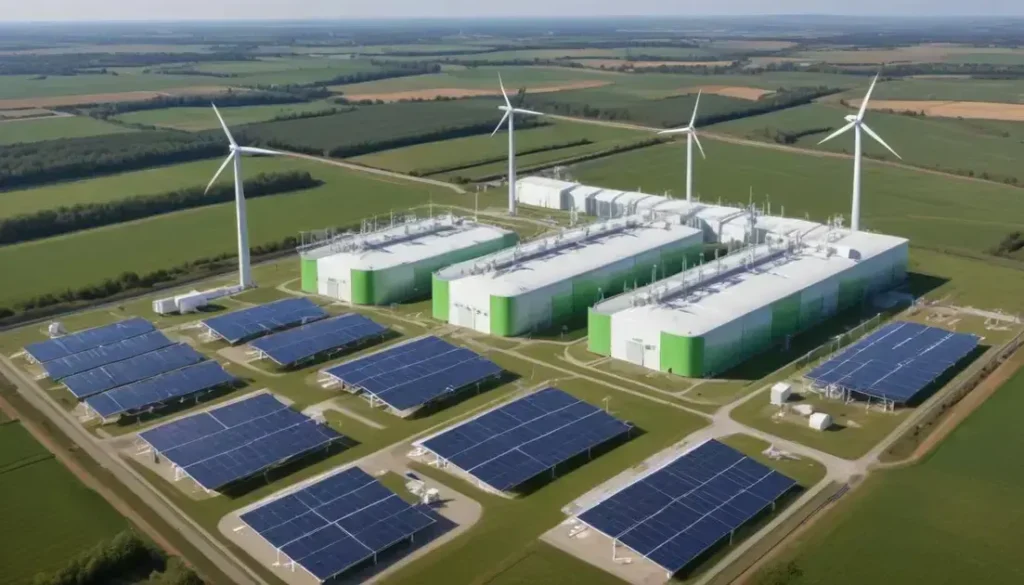Onshore wind initiatives significantly boost local economies by creating jobs, generating tax revenues, and promoting sustainable energy development through collaboration between industries and government, ultimately transforming the renewable energy landscape.
The new Onshore Wind Strategy launched by the UK government could be a game changer for renewable energy. How does this affect us?
Job creation through onshore wind initiatives
A significant aspect of the onshore wind initiatives is the creation of jobs across various sectors. The construction and maintenance of wind farms demand a skilled workforce, leading to job opportunities in engineering, project management, and operational roles. These positions not only support the energy sector but also stimulate local economies through increased employment.
Moreover, local communities benefit from ancillary services that are integral to the wind industry, such as logistics and supply chain management. This ensures that a diverse range of jobs becomes available, fostering economic growth and stability in regions transitioning to renewable energy.
The green jobs generated by onshore wind projects often come with training programs that enhance the skill set of the local workforce. As individuals upskill, they become more employable in a rapidly evolving job market. This focus on education and skill development is essential for a sustainable future.
In addition, such initiatives can encourage entrepreneurship as local firms and businesses collaborate with wind developers. This creates a ripple effect where new ventures arise to meet the needs of the wind industry, further driving job creation in the region.
Economic impact for local communities
The transformation brought by onshore wind initiatives significantly affects the economic landscape of local communities. These projects can lead to an influx of investments that stimulate growth. As wind farms are developed, they create a demand for construction materials, equipment, and services, which in turn boosts local businesses.
Increased revenue for municipalities is another critical aspect. Tax revenues generated from wind energy projects can help fund public services, improve infrastructure, and enhance community amenities. This enables local governments to reinvest in community development and services that benefit residents.
The presence of wind farms can also enhance job opportunities, not just in installation and maintenance but also in ancillary sectors such as hospitality and retail. As workers migrate to the area for employment, local businesses often see increased patronage, which further supports the community’s economy.
Moreover, local stakeholders are increasingly involved in decision-making processes, ensuring that the developments align with community interests. This engagement fosters a sense of ownership and pride among residents. Understanding and addressing the unique needs of local communities is essential for the long-term success of these initiatives, ensuring that they yield beneficial economic outcomes.
Collaboration between industries and government
The collaboration between industries and government plays a crucial role in the success of onshore wind initiatives. This partnership fosters a conducive environment for innovation and scalability. By aligning their objectives, both sectors can create a streamlined approach to address regulatory challenges and promote sustainable practices.
Joint ventures can lead to sharing of resources, knowledge, and technology, significantly enhancing project efficiency. When government bodies support renewable energy projects through incentives or policy frameworks, they empower businesses to invest confidently in wind energy.
Furthermore, these collaborations often include stakeholder engagement, ensuring that the voices of local communities are heard. This participatory approach can refine project designs, making them more compatible with community expectations and enhancing public support.
Financial backing from the government can also mitigate risks associated with large-scale wind projects. Such support encourages private investors to come forward, securely creating a diverse funding ecosystem. As industries and government agencies unite, they can pave the way for a thriving renewable energy landscape, ultimately contributing to economic resilience and environmental sustainability.
In summary, the impact of onshore wind initiatives
The onshore wind initiatives present an exciting opportunity for economic growth and job creation, especially for local communities in India. By harnessing renewable energy, we can drive sustainable development while addressing climate change challenges.
Collaboration between industries and the government is essential to ensure successful projects. These partnerships can lead to innovative solutions that benefit both the economy and the environment.
As we look to the future, it is clear that investing in onshore wind energy can create a brighter and more sustainable world. By supporting these initiatives, we can help shape a cleaner energy landscape for generations to come.
So, let us embrace the potential of onshore wind energy and work together towards a greener future.
Frequently Asked Questions
What are the economic benefits of onshore wind initiatives?
Onshore wind initiatives can enhance local economies by creating jobs, increasing tax revenues, and supporting local businesses through new investments.
How does collaboration between industries and government help wind energy projects?
Collaboration enables better resource sharing, regulatory support, and community engagement, leading to more successful and sustainable wind energy projects.
What types of jobs are created by onshore wind farms?
Jobs range from construction and maintenance roles to positions in logistics, project management, and local services that benefit from increased economic activity.
What role do local communities play in wind energy projects?
Local communities are crucial as their input helps shape projects to meet local needs, ensuring greater acceptance and support for wind energy facilities.
How can governments support onshore wind initiatives?
Governments can provide incentives, create favorable policies, and invest in infrastructure that facilitates the development and maintenance of wind energy projects.
What is the environmental impact of onshore wind energy?
Onshore wind energy significantly reduces carbon emissions, helps combat climate change, and provides a sustainable alternative to fossil fuels.


